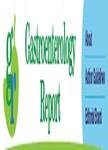Elevated peripheral blood neutrophil-to-lymphocyte ratio is associated with an immunosuppressive tumour microenvironment and decreased benefit of PD-1 antibody in advanced gastric cancer
作者机构:State Key Laboratory of Oncology in South ChinaCollaborative Innovation Center for Cancer MedicineSun Yat-sen University Cancer CenterGuangzhouGuangdongP.R.China Department of Medical Oncologythe Third Affiliated Hospital of Sun Yat-sen UniversityGuangzhouGuangdongP.R.China Department of Medical OncologySun Yat-sen University Cancer CenterGuangzhouGuangdongP.R.China Department of Gastric SurgerySun Yat-sen University Cancer CenterGuangzhouGuangdongP.R.China
出 版 物:《Gastroenterology Report》 (胃肠病学报道(英文))
年 卷 期:2021年第9卷第6期
页 面:560-570页
核心收录:
学科分类:1002[医学-临床医学] 100214[医学-肿瘤学] 10[医学]
基 金:supported by the CAMS Innovation Fund for Medical Sciences(CIFMS)[2019-I2M-5-036] the Science and Technology Program of Guangdong[2019B020227002]
主 题:advanced gastric cancer neutrophil-to-lymphocyte ratio anti-PD-1 monoclonal antibody tumour microenvironment
摘 要:Background Due to its limited efficacy and potential toxicity,anti-PD-1 monoclonal antibody is not suitable for all advanced gastric cancer(AGC)patients and predictive biomarkers identifying patients who can benefit from it are urgently *** study aimed to evaluate the predictive and prognostic value of inflammatory markers in the context of the systemic inflammatory status and tumour *** The study included 58 patients from a prospective study investigating the safety and efficacy of toripalimab in chemorefractory AGC *** characteristics,treatment outcomes,and haematological parameters were ***-cell infiltration and gene expression in tumour tissue were examined using transcriptome *** In this cohort,the median follow-up time was 4.5 months,the median progression-free survival was 1.9 months,and the median overall survival(OS)was 4.8 *** objective response rate was 12.1%and th disease control rate(DCR)was 39.7%.Both the baseline blood neutrophil-to-lymphocyte ratio(bNLR)with a cut-point of 2.7 and the early elevated dynamic change of the bNLR(dNLR)with a cut-point of 1.5 were prognostic factors of *** in the high bNLR or dNLR group had remarkably poor DCR(25.8%vs 59.1%,P=0.023;15.8%vs 54.6%,P=0.008).In multivariate analysis,bNLR and tumour mutational burden were independent prognostic factors of *** RNA-seq analysis revealed enriched neutrophil infiltration and a higher tumour NLR in the bNLR-high *** tumour gene-expression profiles were associated with neutrophil recruitment and inflammatory cytokine *** Our study demonstrated the potential clinical utility of NLR as a biomarker for patient selection and clinical management in predicting the prognosis of AGC patients as well as response to anti-PD-1 *** addition,high bNLR reflected the imbalance of tumour-tissue-infiltrating neutrophils and lymphocytes,and was associated with an



